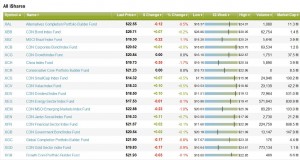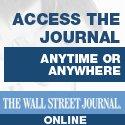A press release by BlackRock Inc., dated January 22, 2010, states that trading of Exchange Traded Fund (ETF) represents “16 % of all equity volume in Canada.” In response to increasing money flows into these securities, there is increasing choice, including bank sponsored ETFs. News released by the Bank of Montreal (BMO) recently, highlights some of the benefits of ETFs over mutual funds as being “liquidity, risk control and cost effectiveness.” But wait, there are even more benefits, not the least of which is greater control over your portfolio and probably at a lower cost. Most ETFs are passively managed. However, some, similar to mutual funds are actively managed.

How to use ETFs
1. Long term buy and hold strategy
2. Short term trading
3. Long term investor wanting to better manage risk
4. Hedge mechanism for your portfolio
An investor can accomplish any and all of these strategies with ETFs. The following list may not be exhaustive, but it does cover most of the advantages of ETFs over mutual funds (MF).
1. Like a MF an ETF is diversified but with a low MER (as low as 17 basis points).
2. You have far greater risk control, with the ability to use stop-loss orders.
3. Unlike a MF, you can pick your entry and exit prices and trade intraday.
4. Unlike a MF, you control when capital gains are taken.
5. You can hedge your portfolio with an ETF.
6. You can easily take short positions with an ETF.
7. You can purchase foreign equity market and commodity exposure.
8. Some ETFs give you the ability to leverage.
9. Unlike a MF, the holdings in an ETF are very transparent. Mutual fund holdings are typically published semi-annually whereas ETF holdings are normally available daily.
What to Look Out For
Investing or trading an ETF has many of the same risks as trading a particular stock, except of course regarding diversification. So if ETFs have all these advantages, what are the disadvantages? Here are some actions and issues to consider because “the devil is in the detail.”
1. Keep it simple, especially when starting out. Buy a stock or bond index. For example the capped TSX Composite Index Fund (XIC on the Toronto Stock Exchange), is available with a Management Expense Ratio (MER) of a mere 0.25%.
2. MERs vary. So before you buy, do your homework to know exactly what you are buying and how much it will cost.
3. Be sure the ETF follows a widely recognized basket.
4. Dividends, while normally paid quarterly, are not paid on all ETFs.
5. Although, not an issue with most ETFs, there can be, over time, a divergence between the ETF and the tracked commodity/index. Because the double bear and double bull ETFs have become somewhat notorious in this regard, they should not be held for long periods, but actively traded.
How many mutual fund managers consistently beat an index, say over a ten year period? Very few if any do. This is partly because of those high MERs. If you purchased XIC on Toronto, you would meet the index less 25 basis points, year after year (less whatever trading commission you initially paid). And let’s face it; the mutual fund manager’s target return is to match the index.
Do you utilize ETFs in your portfolio? Have ETFs taken the place of mutual funds? What has been your experience with them? Let me know in the comments.
If you like this post, please take a moment to share it via Twitter, Facebook and StumbleUpon!









